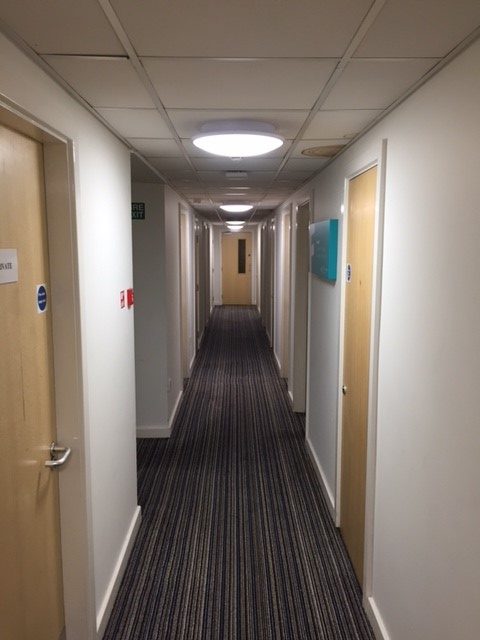When it comes to residential settings, like student accommodation, hotels, and shared housing, it pays to be prepared for any eventuality. Emergency lighting is part of this preparation, and it can really help to prevent physical damage, and panic, in an emergency situation. But what is emergency lighting? And how does it work? Well, here at Walker Electrical, we are Preston’s leading electrical experts. As a result, we have produced this guide to emergency lighting in residential settings.
What is emergency lighting?
Lighting that is specially designed to be activated when the main power supply fails is known as emergency lighting. This is because the loss of mains electricity can be caused by an emergency situation, like a fire. And it would cause mass panic if people could not find the exits and routes that lead safely out of the building.
For this reason, emergency lighting is placed around exits and escape routes, to make sure that even in the event of an emergency, there is some light that will help your tenants or residents get to safety.
The law
It is a legal requirement for certain residential premises to provide emergency lighting, and there are other legal requirements to meet. In fact, you could be breaking the law if you:
- Don’t complete a risk assessment
- don’t comply with current standards for emergency lighting installations
- Don’t comply with current standards for emergency lighting products
- Don’t comply with current standards for emergency lighting testing
- Don’t rearrange emergency lighting after a building refurbishment
Emergency lighting
Emergency lighting in residential settings is divided into different areas including escape route lighting and open area lighting.
- Escape route lighting- this is the emergency lighting that is positioned around exits and corridors leading out of the building
- Open area lighting – this is provided to minimise panic and help the occupants of a building to reach a place where an escape route can be identified.
For more information or installation and maintenance advice, get in touch with the experts today, here at Walker Electrical.
